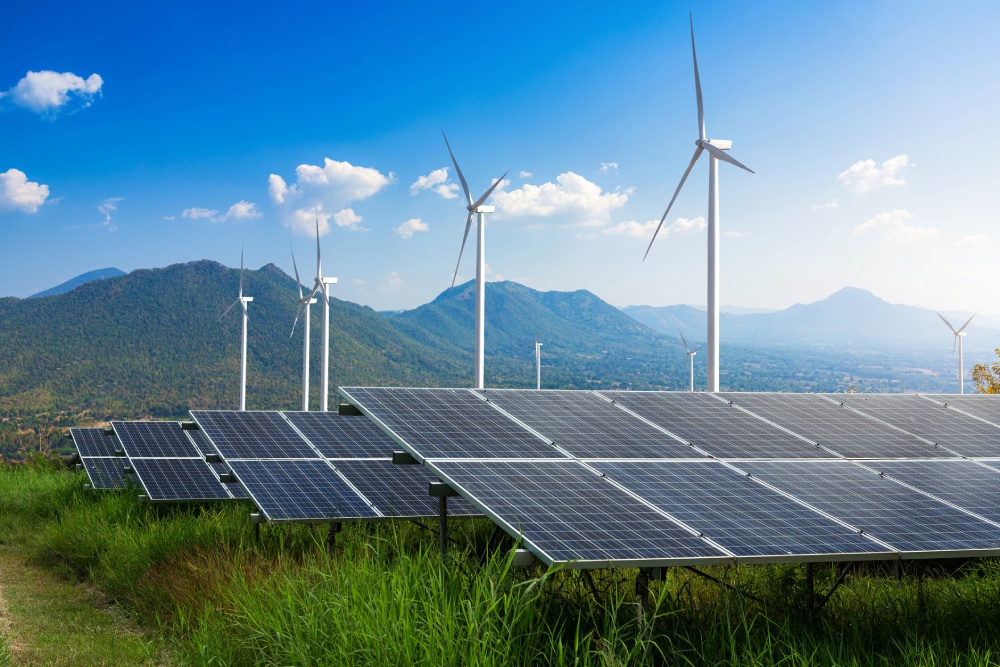Foreign investments to fulfill ASEAN’s need for ‘greener’ pastures
The tables have turned on Asia as far as climate change is concerned.
The Asian Development Bank (ADB) said Asia and the Pacific is now the source of 50 per cent of global carbon dioxide (CO2) emissions in 2019.
ADB defines “carbon intensive” investments as those that went into manufacturing, mining, quarrying, power and gas, and other business activities producing relatively higher greenhouse gas emissions and other pollutants. Their announcement comes after Asia accepted “carbon-intensive” foreign direct investments (FDIs) equivalent to one-third of global inflows between 2008 to 2016. Furthermore, as seen in graph 1, one would find that Southeast Asia is the second favorite destination of carbon-intensive FDI, accounting for 33.5 per cent of inflows.

The paradox worsens as 20 Asian countries have been identified as areas most at risk to suffer the ill effects of climate change, which is seen to disrupt livelihoods, displace households, and lead to injury and death. Three of the 10-member Association of Southeast Asian Nations (ASEAN), which has been leading global economic growth, are part of this group: Cambodia, Philippines, and Vietnam. For these countries, the impact of climate-related disasters is more pronounced for rural communities relying heavily on farming and fisheries. Rice, a staple food across ASEAN, is seeing double-digit price increases as the expected severe El Niño phenomenon began mid-2023. Bloomberg reported that importers like the Philippines and Indonesia raring to build deeper stockpiles as extreme weather conditions are seen affecting local crop production.
The region’s growing population coupled with rapid economic development also hastened CO2 emissions, the ADB said, signaling the increased need to take on steps to reduce CO2 production or reach net zero, where so-called green initiatives counter the volume of emissions.
The United Nations’ Sustainable Development Goals put emphasis on climate action across nations, spanning five items out of its 17-point goal by 2030. Goal 13 on climate action targets reducing CO2 emissions by 45 per cent between 2010 to 2030 to limit global warming to 1.5 degrees Celsius.
Selecting better, sustainable investments
It is understandable for developing ASEAN member-states to take a “more is better” approach toward FDI inflows to create more jobs and spur even faster economic growth. The modern view, however, requires policymakers to incorporate a sustainability lens in evaluating FDI prospects.
In recent years, there has been a stronger clamor for green and sustainable business practices from utilities and electronics to retail goods. ASEAN countries are particularly well-positioned to accommodate greater investments especially in “green” sectors.
DBS Bank estimates a USD 2.65 trillion to USD 3 trillion opportunity for additional green investments in ASEAN from 2016 to 2030, with the biggest need seen in infrastructure (USD 1.8 trillion), followed by renewable energy; energy efficiency; and food, agriculture, and land use. As seen in graph 2, Indonesia will be needing the biggest amount.

The Economic and United Nations’ Social Commission for Asia and the Pacific have said tighter regulations on the quality of inbound FDIs should be put in place to ensure sustainable development across industries.
‘Green’ means go
Developing ASEAN faces the problem of under-investment in critical infrastructure and climate change mitigation initiatives given limited annual public sector budgets. To foreign investors, these present opportunities to enter Asian markets and participate in the region’s strong economic growth. We remain optimistic on ASEAN’s growth story, and further investments on sustainable projects will prop up its vibrance.
DBS estimates that Indonesia accounts for 36 per cent of the green investment gap, particularly in infrastructure and renewable energy sources. As an archipelago, Indonesia needs additional infrastructure in rural and remote areas, especially those which are not yet electrified or have intermittent to no communication signal. The Indonesian government has limited fiscal space to fund big-ticket construction in recent years due to COVID-19 response and fuel subsidies committed to consumers.
In the Philippines, additional FDIs are necessary for the power sector due to dwindling supply from the Malampaya natural gas field which has been supplying 30 per cent of electricity in the Luzon area, the country’s biggest island bloc and center of commerce. The Philippine Department of Energy is targeting to raise the share of renewable power sources to 35 per cent by 2030 and 50 per cent by 2040, coming from 28.9 per cent in 2021. Power plants in the Philippines primarily produce electricity using coal (42.5 per cent of the power generation mix), oil (16.1 per cent), and natural gas (12.5 per cent). There is scope for greater investments in renewable power generation projects as the Philippine government began allowing full foreign ownership in the sector beginning in October 2022. The current administration is particularly keen on nuclear power, while tax incentives are on offer for power generation facilities that supply renewable energy to the market.
In Vietnam, green projects to address the twin issues of air and water pollution are urgently needed in line with a “circular economy” model of reduced waste and increased eco-friendly inputs, alongside a target to phase out coal power plants before 2050 – providing a huge opening for renewable energy companies. Coal accounts for more than 50 per cent of Vietnam’s energy mix, according to a report.
Developing Southeast Asian countries also benefit greatly from technology and knowledge transfers within the region, a process made easier by the establishment of the ASEAN Economic Community and the Regional Comprehensive Economic Partnership. The challenge for governments, however, is to attract more FDIs and to ensure that these will fund sustainable business activities. When done right, ASEAN economies can cement their status as global growth leaders that benefit their people through reduced CO2 emissions.
This original article has been produced in-house for Lundgreen’s Investor Insights by on-the-ground contributors of the region. The insight provided is informed with accurate data from reliable sources and has gone through various processes to ensure that the information upholds the integrity and values of the Lundgreen’s brand.






